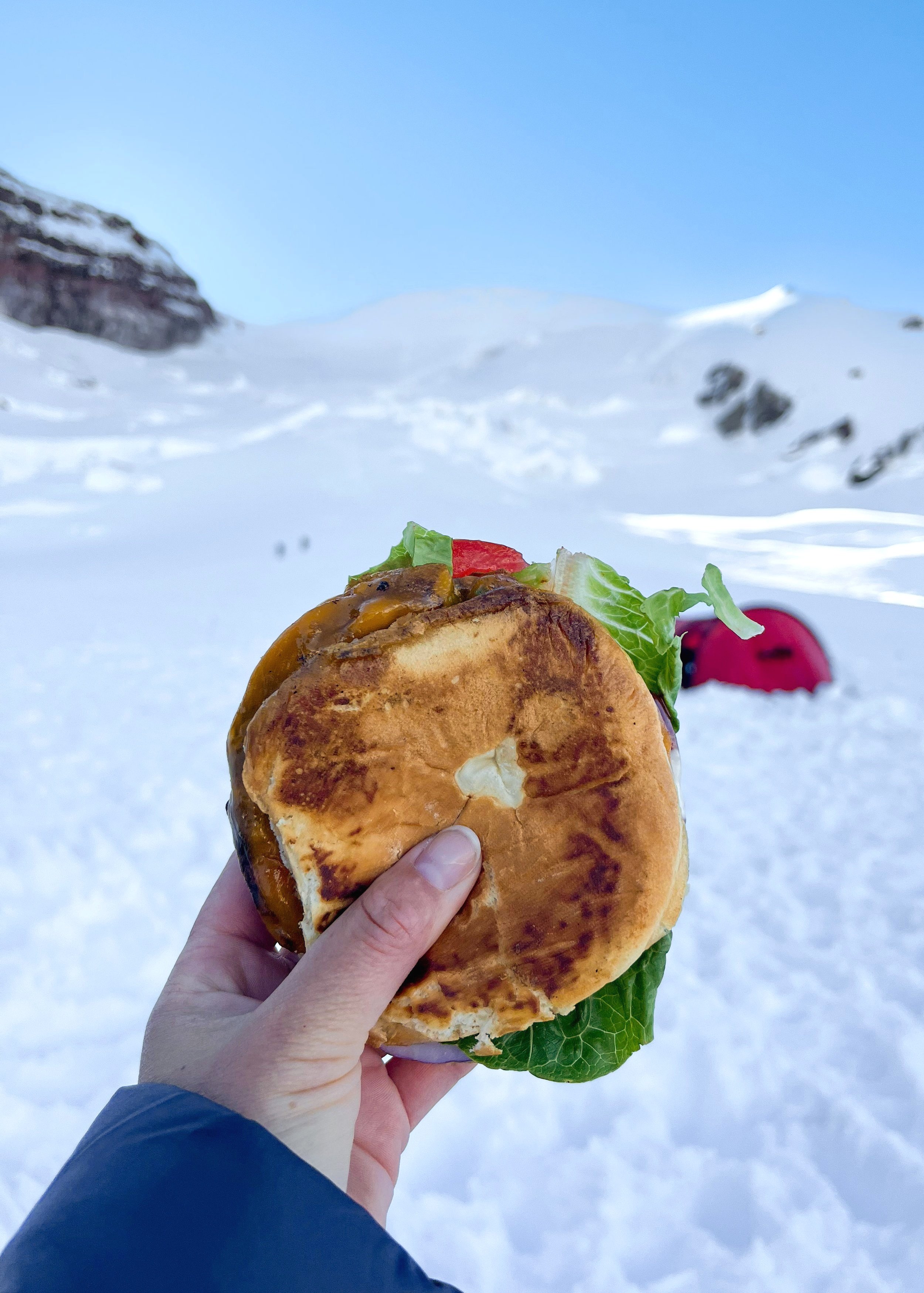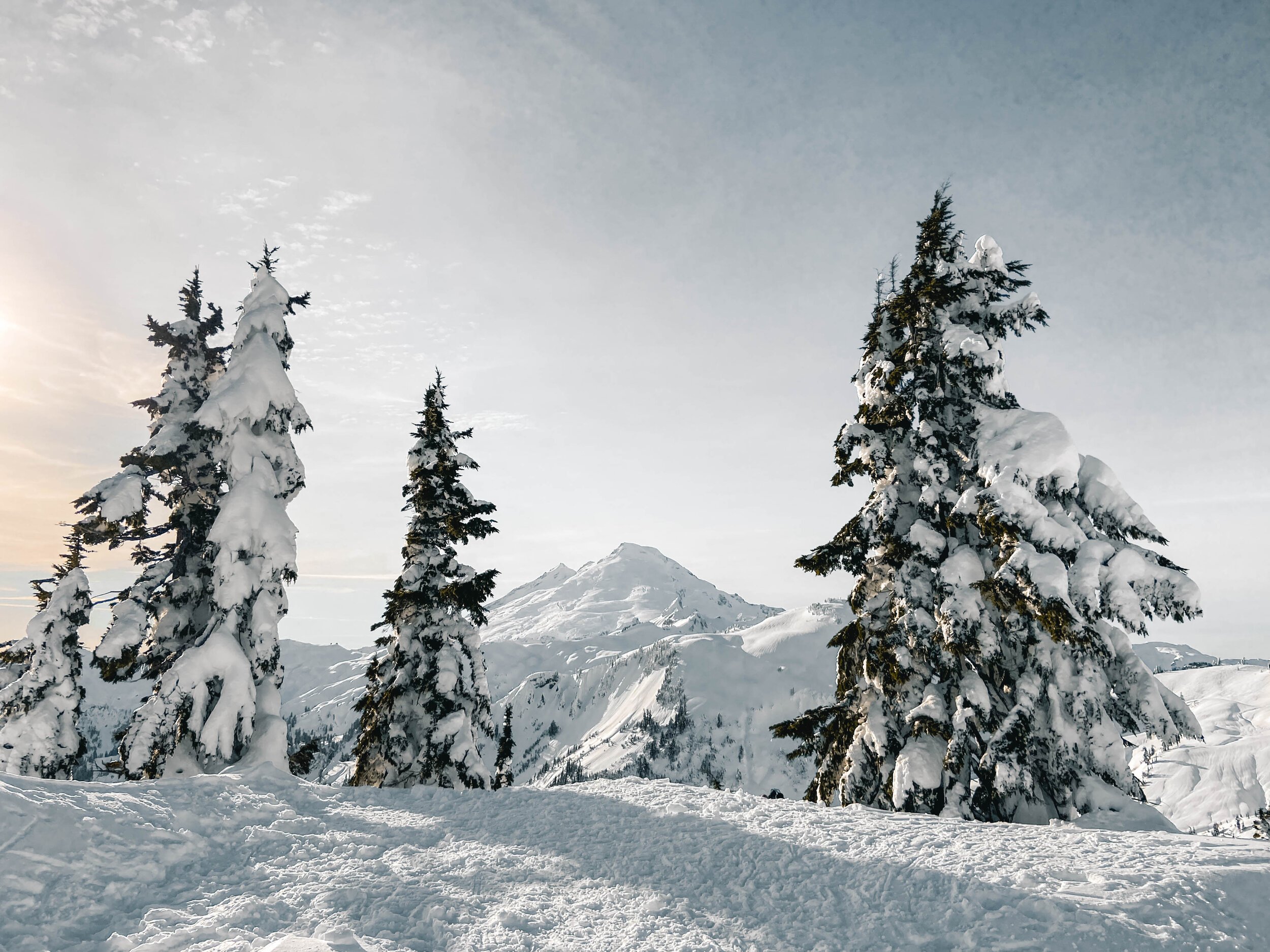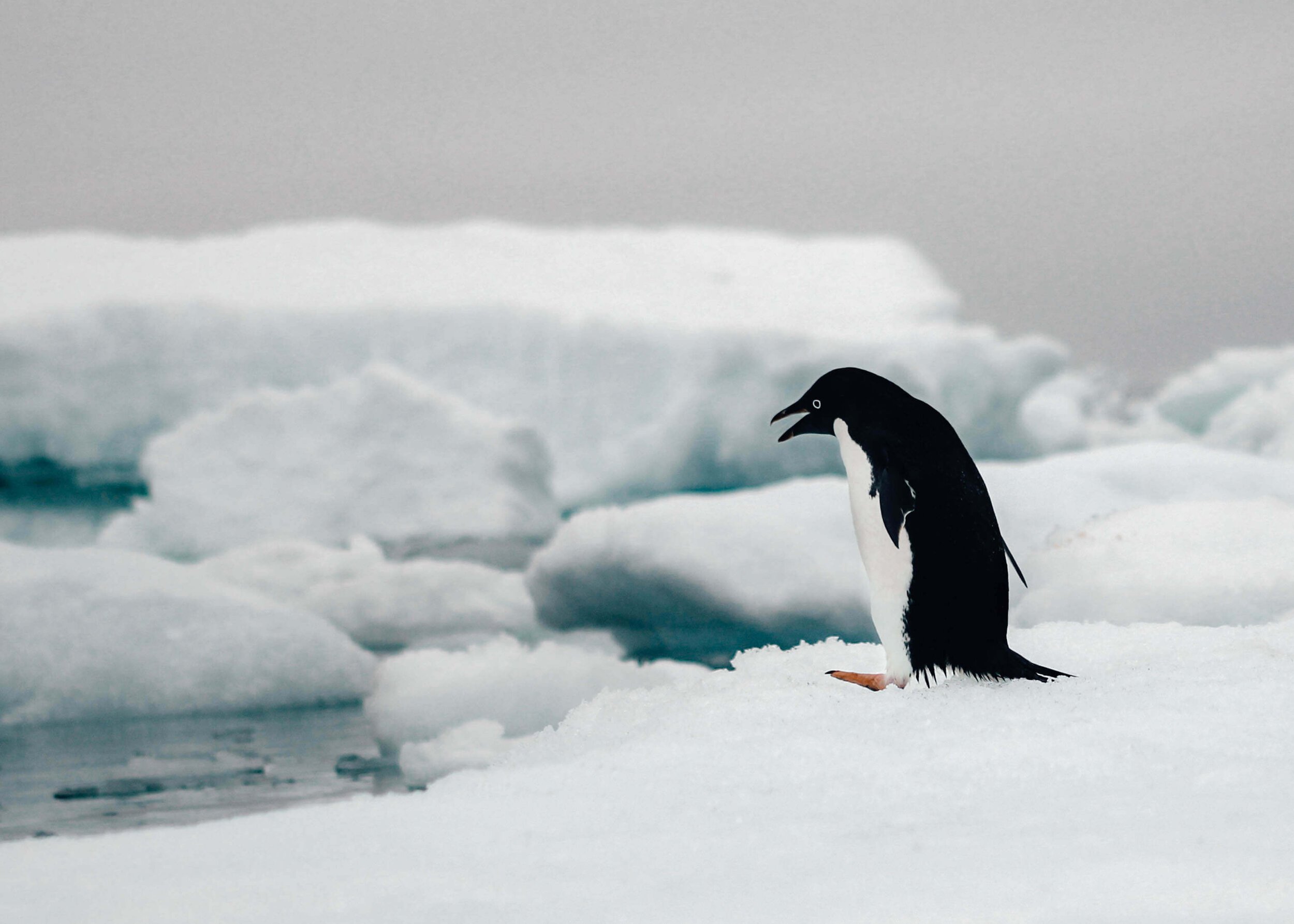Summits Aren’t Worth Dying For
In June 2022, I set out to summit Mount Rainier. At 14,410 feet, it is the tallest mountain in Washington and the fifth tallest in the contiguous United States. Our summit bid was called off after an avalanche and the experience taught me the importance of mitigating risk and finding peace within acceptance.
Ingraham Flats is a glacier perched 11,100 feet above sea level and 3,310 feet below the summit of Mount Rainier. It is here, cordoned by crevasses, that we settled into basecamp. It consisted of six bright yellow tents, one large red cook shelter, a dug out ice pit that served as a common area, and another ice pit that was our bathroom⏤a glorious hole in the ice complete with a supreme view to do one’s business.
We had climbed to Ingraham Flats that afternoon from Camp Muir, our previous night’s camp, and I had just curled into my sleeping bag for a post-climb nap. A few minutes into my attempted slumber, I heard a thunderous crack. It took me a second to comprehend the sound, which was out of place from the typical silence of the mountain, but then I understood what the sound had been⏤and what it meant. My stomach fell. I rolled over to find my climbing partner, Kate, frozen in place at our tent’s entrance, her back to me as she looked out toward the summit .I poked my head out beside hers and together we watched the avalanche pummel its way down the mountain. We watched ice chunks the size of pickup trucks tumble between climbers as they descended from the summit.
“They’re going to be okay, they’re going to be okay, they’re going to be okay,” Kate, the optimist, repeated.
“There’s nothing we can do, there’s nothing we can do, there’s nothing we can do,” I, the realist, said.
Ingraham Flats, our summit basecamp, surrounded by crevasses
Mount Rainier, seen from basecamp, with the slide’s debris seen just below the summit
Later, we would learn that the avalanche, D3 in size (translation: considerably bad) was the result of a hanging serac (translation: a glacial overhang). The serac shook part of itself off, like casually shrugging off a jacket, and its remnants slid with abandon. The ice chunks had narrowly⏤miraculously, really⏤missed the climbers descending Rainier and they all made it down safely. Four of them were part of a guided group that had approached the summit from the other side of the mountain. Because of this, they hadn’t seen the hanging serac. The other two climbers were summiting independently. The guided group made it down to our basecamp in an hour; the couple took four.
When the couple finally stumbled into our camp, and I mean hands-and-knees-on-snow stumbled, my team was chatting and enjoying a feast of burgers for dinner. It was a vision of dichotomy if I’ve ever witnessed one. Our guides checked on the couple, then invited them to join us and offering them food and water. As they ate their burgers, they admitted they were doing a car-to-car summit, an ultra-ambitious task that involves waking up, summiting and returning to your car in the same day. They started at 4am the previous day, they said, putting them at hour 27 of their climb. Because they were doing a “quick” summit, they didn’t have gear to overnight on the mountain⏤no tent, no food, no water⏤and lacked necessary layers of clothing.
They insisted they were fine to get to their car, another five miles down, but our guides urged them to sleep at Camp Muir in the emergency hut, a mile away. One of our guides let them borrow her insulated Patagonia jacket, while another guide helped the man zip up his coat and get his helmet on. They were exhausted and delirious, there was no beating around that bush. If there was ever an ideal conclusion to surviving an avalanche after climbing for 27 hours straight, these guys got it: warm jackets and hot burgers handed to them at 11,100 feet with hot water to wash it all down.
By the time we were chowing down on burgers, it had been several hours since we learned we would not push on to the summit. Our lead guide, Lyra, had announced it shortly after the avalanche took place. Could we climb? Technically, yes, she said. Should we? No, it’s not worth the risk. After witnessing the state of the couple, her decision made more sense. We didn’t want to be like them, stumbling with overconfidence into dangerous territory.
Lyra, named after a constellation, was the north star we followed. She is a well-known, well-respected and highly-seasoned guide with Alpine Ascents International. Several times throughout our climb I noticed other guides approach her to exchange a laugh or a handshake. She’s also climbed Rainier nearly eighty times, so when she says a summit is a no-go, you have to trust that the woman knows what she’s doing. I didn’t like the verdict, but I respected it. She also provided context for her decision, which I appreciated. She explained how seracs work and the considerations she took into account when making her decision, such as the type of snow we were working with and warming temperatures. In the end, there wasn’t a safe route to reach the summit, she said, and guided trips were called off. Instead of summiting, we would spend the morning practicing snow and mountaineering skills, like self-arresting with an ice axe and tying knots.
Earlier that day, immediately after Lyra told us the news, several of my teammates erupted in a barrage of positivity, which is a respectable coping mechanism but one I had no interest in. They donned their optimism hats and positive attitude capes with gusto while I sat blank-faced, digesting my new reality. They said things like, “it will still be beautiful to camp here tonight, the stars will be amazing!” and “we’ve already learned so many skills, summiting would be the cherry on top!” They weren’t wrong; the stars would be phenomenal and I had learned so much already. But I couldn’t muster optimism, I couldn’t even feign it. I needed to feel the sadness and anger and frustration that came from losing the full experience that I’d worked so hard for. I was strong, I was ready, but my goal was no longer in reach. I didn’t need cheerfulness in that moment, what I needed was space to grieve.
I spent the afternoon vacillating between admiring the scenery and quietly wallowing. By the time dinner rolled around and I saw the couple, my sadness was approaching something that resembled acceptance. We weren’t fully there, but we were edging closer to it. I had slowly come to terms with the fact that nature has its own agenda and it has no consideration for my feelings, nor should it. I couldn’t control the situation, but what I could control was my reaction to it. Did I have lingering feelings of frustration? I sure did. I’m not going to pretend that I was the poster child of optimism that day. If anything, I was the mascot for coping by way of brooding. But I also had a cheeseburger with lettuce, onion and tomato, was surrounded by tough women and staring straight at a mountain I’ve admired since childhood. The world I currently occupied really wasn’t all that bad. Plus, I had climbed 6,000 feet up a mountain with 40 pounds on my back. I was proud of myself and my team. I decided that if I couldn’t summit Mount Rainier, then, at the very least, I’d enjoy an immaculate sunrise from a place that few people have the privilege to.
Lyra (in green) advising our climbing team
My alarm buzzed at 4:30 the next morning. The sky was still dark when I emerged, the glow of dawn just barely approaching. I moseyed to our camp kitchen, a shelter dug into the snow that had benches carved into the ice and a bright red canopy for a roof. It was here that I learned the most important lesson of mountaineering⏤one of many I would learn over the course of our three-day climb.
As I entered the cook tent, I saw Katie, one of our guides, boiling water for coffee. Katie primarily guides climbing trips on Mount Shasta in California but recently began dabbling in guiding Rainier climbs. She’s down-to-earth, predominately quiet and exudes a calming presence. She’s also the guide I connected with most. We exchanged morning greetings and she got right to the heart of it: “I know you’re upset about the decision not to climb. It’s healthy to give yourself space to feel that, just don’t let it dominate the experience.” Keeping it real at 4am, Katie, no wonder I like you.
“If it makes you feel better,” she continued, “I wouldn’t have tried to summit even if I were on my own and not leading a team.” She poured boiling water into her camp mug. “The goal isn’t to summit,” she said. “The goal is to get back to the parking lot alive.”
In the moment, while standing at the base of the mountain I no longer had the chance to climb, it was difficult to see the logic in her words. Summit bad, parking lot good, I told myself, trying to make sense of what she was saying by dumbing it down to caveman terms. Dying bad, life good. Eventually, albeit begrudgingly, I agreed with her. She had a point, I guess. As we sipped our coffee, she shared stories from her past, about moments of recklessness that she regretted. Risk-management, she admitted, was one of the hardest lessons to learn but also the most vital. My only goal for this climb had been to stand at 14,410 feet; it hadn’t occurred to me that coming down alive was also a valid goal to have.
What I was experiencing wasn’t unique. In fact, this phenomenon has a name: summit fever. To have “summit fever” is to hyper-fixate on a desired outcome, typically summiting a mountain, and doing so no matter the cost. The compulsion to summit creates a dangerous cocktail of obscured judgment and impaired decision-making with a healthy splash of recklessness added for good measure. The result? Climbers risking their lives⏤and sometimes the lives of others⏤to reach a peak. And this, folks, is why we hire experienced guides to keep us in check.
Mountaineering is a far cry from a cheap hobby. It’s even less so if, like myself, you are new to it and choose to partake in guided trips (as people who are new to it should). When the summit was called off, I thought about the money first. I knew it was a ridiculous thing to consider, especially when safety is involved, but I’d be lying if I didn’t say the thought crossed my mind. Considering the cost of the climb, I knew it would be at least a few years before I’d return to the same spot, attempting to summit Mount Rainier again. In addition to the money, there is the time it takes to train. One does not simply wake up and decide to climb a volcano on a whim. I’m sure there are some nutty climbers out there who do precisely this, but I am not among them. Instead, it was nine months of physical training and thousands of dollars that brought me to that cook shelter with Katie, sipping coffee and digesting her nuggets of wisdom about life and death.
The sun was about to peak over the horizon so I wandered out of the cook tent and to our “common room,” an area where snow had been shoveled away and a floor and benches carved out of ice took its place. I found Kate there, and as we looked toward Mount Rainier we glimpsed a line of climbers traversing the maze of crevasses toward the summit. They were independent climbers, not part of a guided group. It was a punch in the gut to see them, to be demoted to spectator. Despite Lyra’s explanations and Katie’s words, I still felt robbed by nature. (And if you’re wondering, the answer is yes, there was a Katie, Kate and Caitlin on our climbing team. There was also a Cat, just to round it out.)
I turned around to put my back to the mountain, facing the sunrise in search of a silver lining. Fortunately, I found it tucked between the rows of blue mountain ranges stretching into the distance like waves in the sea. And again as it straddled the horizon, infused within the sunrise’s layers of pink, orange and yellow. It had even slipped into the formidable depths of the crevasse just ahead, the one marking the edge of our camp, like Mother Nature’s version of taking a black Sharpie to draw its boundary lines. Despite it being thirty feet away, I had been afraid that I’d fall and slide into that crevasse on the way to the “bathroom” the night before. I had slipped my feet into my icy boots and only taken two steps out of our tent and peed right there. I could still see the yellow hole and laughed.
I took deep breaths as I stared into the abyss. I let the crisp air and aura of the morning seep into my being and exhaled the sadness and anger out. Summits aren’t worth dying for, I told myself. It seems such an obvious statement but it remained such a foreign concept to grasp. It all the more challenging while standing in four layers so near to the mountaintop I desperately wanted to be standing on. Summits aren’t worth dying for, I said to myself quietly, as if uttering the words aloud solidified the truth in them. It’s true, they aren’t. Summits aren’t worth dying for.
As the sun’s tendrils warmed my face, I let reality wash over me: I wasn’t going to summit Mount Rainier, not this time. I let the previous night’s sadness commingle with this morning’s acceptance. I wouldn’t summit, and that was okay. Attitude is the difference between an ordeal and an adventure and there is quite a bit of good to be found within life’s misadventures. Hell, I made a whole website dedicated to such a notion (welcome, you’re reading it now!).
Despite not standing atop Mount Rainier as planned, my climb joins the ranks of my most remarkable travel experiences. It pushed me into new territory that challenged me physically and mentally; it introduced me to lovely like-minded people that I’d be honored to climb alongside again; it provided a crash-course in risk-management, of which I apparently was overdue for.
On the day of our would-be summit, I had the privilege of watching sunrise from a pristine glacier with a sweeping view ahead of me that was emblematic of how the world looked before humans got their grimy hands on it. After this experience, I’m okay settling for sunrise if it means I’ll get to summit another mountain on another day. In the end, I wasn’t robbed by nature at all, despite how much I felt it to be the case. Rather, I was handed a different, equally wonderful experience. And, hey, I made it back to the parking lot, so I accomplished the ultimate goal: staying alive.















